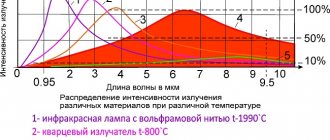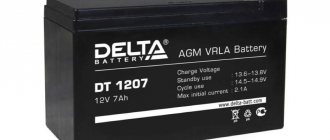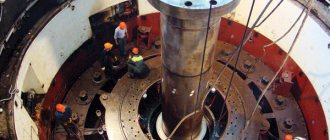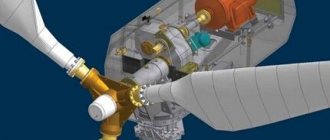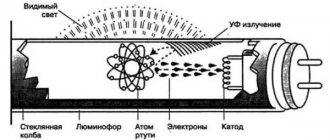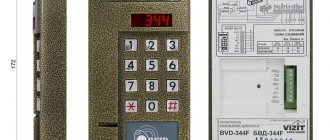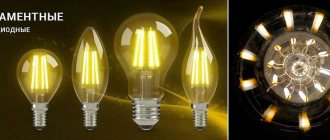Electricity
Electricity is a unique resource.
It can be produced in any quantity, it is inexhaustible and is not based on fossil elements. Such properties make electricity very in demand, widespread and popular. There is also a downside - producing electricity requires fairly powerful equipment that requires maintenance, repairs and other work that can only be performed by qualified people. Electric mains, an extensive network of which covers the entire country, lead only to densely populated areas, bypassing remote regions. This is understandable, since the costs of installing power lines are very high, so only the largest points are provided with electricity first.
What is wind energy
Wind energy is a method of producing various types of energy based on the use of energy generated by the movement of air masses, that is, simply put, the use of wind energy.
Wind energy has been used by mankind for a long time. It was wind energy that propelled sailing ships for centuries, allowing them to cross oceans; wind energy was also used in mills, and it was also used to irrigate fields and drain land. And then, when humanity discovered the benefits of electricity, attention was again paid to wind energy: in the 19th century, wind power plants were actively built for industrial electricity production.
Autonomy
Surely, after the next increase in the price of electricity, you have thought about installing a wind generator on your site. Thus, providing, if not all, then most of your electricity needs.
Some are even thinking about becoming independent from power grids in this way. How realistic and possible is this? Unfortunately, for 90% of private home owners, these dreams will remain dreams.
And so that you don’t waste your money, we’ll tell you, laying out all the numbers, why this is exactly so.
Large capital costs
Compared to other types of renewable energy, wind requires huge capital investments. Turbines located far from populated areas require power lines, and coastal stations require expensive underwater cables.
Wind power plants do not emit harmful substances into the atmosphere Photo: Depositphotos
Wind speed
Unfortunately, there are not many regions in our country where the wind speed is at least 5-7 meters per second. The data is taken on average per year. In the vast majority of latitudes suitable for habitation, this same speed is a maximum of 2-4 m/s.
This means that your wind turbine will simply not work most of the time. For stable generation of electricity, it needs a wind of about 10 m/s.
If the wind in your area is 7 m/s, then the generator will operate at a maximum of 50% of its nominal value. And if it’s only 2 m/s, then by 5%.
In fact, in an hour, a 2kW generator will give you no more than 100W.
You will also encounter another wind problem that manufacturers are silent about. Near the ground, its speed is much lower than at the top, where industrial installations with a height of 25-30m are installed.
Manufacturers modestly keep silent about the fact that for their wind resource maps, measurements are made at an altitude of 50 to 70 meters! In addition, data on turbulence and eddies are not taken into account.
If you try to raise it higher than 10m, you will definitely think about lightning protection. Blades electrified by air friction, a very tasty bait for discharges!
In addition, for some reason everyone only worries about such a parameter as wind speed, and at the same time forgets about its density or pressure. And the difference for energy is quite significant. The dependence of electricity generation on wind pressure is disproportionate.
So, when the wind pressure doubles, the generated power increases eight times!
In addition, there is a certain deceit in the specified technical characteristics of the generators.
Of course, you can trust them, but only under ideal conditions. Because:
- These readings are taken in a wind tunnel
- and in laminar flow with constant direction and increased density
At your dacha, the wind speed may be such that you won’t even be able to turn the shaft, let alone generate energy.
And this is in spring or autumn. It is during this period that the most active movements of air masses occur.
Do not forget that the windmill does not operate in idle mode, but must spin the generator rotor surrounded by neodymium magnets.
And this is only as long as the electrical potential of the windmill is lower than the battery voltage. When the voltage is sufficient to begin charging, the battery turns into a load.
If you use low-speed designs with a vertical axis of rotation, then there is already a step-up gearbox. Have you tried to spin up the boost gearbox? This design becomes more complicated, increasing weight, windage, and cost.
Even at the lighthouses of the Northern Fleet, given the constant winds and polar night, experts prefer to use solar panels. When asked why this is so, the answer is simple – there are fewer problems!
Wind power in the world
Technically developed countries also do not ignore alternative energy sources. In recent years, the share of wind energy in the total amount of generated electrical energy in different countries, on different continents, has been constantly increasing, as can be seen in the diagram below:
In European countries, China and the USA, governments pay great attention to this energy sector. Enterprises operating in this area receive various benefits and are provided with financial assistance.
The leader among European countries in the use of wind turbines is Germany, followed by Spain and Denmark. The distribution of capacity, in percentage terms, among countries is shown in the following diagram.
Currently, the largest wind turbines operating in European countries are:
- In Germany: Wind power plants in Germany produce more than 8.0% of all electricity produced. The installed capacity of wind generators exceeds 45,000.0 MW.
- In Spain: Wind power in Spain is widespread both in the private sector and in the industrial production of electrical energy. The share of electricity produced by wind generators is more than 20% of the total amount of electrical energy produced.
- In Denmark: Denmark is a pioneer in the use of wind energy to generate electrical energy on an industrial scale. The history of wind energy in this country began in the 70s of the twentieth century, and to the present day, Denmark is a leader in the production of wind generators and their components. Wind power in Denmark produces more than 40% of the country's total electricity production.
If you look at the map of wind power plants in Europe compiled by the SETIS agency of the European Commission, given below, you can clearly see that Germany is the undoubted leader among European countries in the number of wind generators (installation locations are marked with blue circles). Of those installed in Europe, the largest is the Whitelee wind farm. It is installed in Scotland and consists of 140 turbines.
In other countries on our planet, the use of wind turbines is as follows:
- In the USA: In this country, wind energy as an industry is developing quite quickly. The installed capacity of wind generators is more than 75.0 GW. In the total share of generated electrical energy, the share of wind energy is more than 5.0%.
Wind power plants have been built in 34 states, with the most energy-intensive states being in the following states:
- Texas – installed capacity of wind generators is more than 14,000.00 MW;
- California and Iowa - installed capacity of wind generators more than 5000.00 MW;
- Oklahoma, Illinois, Oregon, Washington, Minnesota - installed capacity of wind generators more than 3000.00 MW;
- Kansas and Colorado - installed capacity of wind generators is more than 2000.00 MW.
- The largest station, San Gorgonio Pass, is located in California, capable of generating more than 600.0 MW of electrical energy, and includes 3218 turbines. More than 50 factories for the production of wind turbines and their components have been built.
- In China: Industrial growth has not spared China's wind energy industry. Currently, the installed capacity of wind generators is more than 150.0 GW. In the share of produced electrical energy in the country, the share of wind energy is more than 3.0%. Chinese energy workers continue to build new wind power plants; by 2021, it is planned to put into operation another 100 GW of electrical capacity. The provinces of Inner Mongolia and the Xinjiang Uyghur Autonomous Region have the greatest potential.
- In Canada: Due to its geographic location, Canada has enormous potential for wind energy development. Wind generators operate successfully in all provinces of the country. The share of electrical energy produced by wind turbines in the total amount of electricity is more than 1.0%. The installed capacity of wind generators is more than 2000.0 MW.
- In India: India is also one of the leaders in the use of wind to generate electricity. The installed capacity of wind generators exceeds 27,000.0 MW. The share of electricity generated by wind generators exceeded 6.0% of the total amount of electrical energy produced in the country.
Methods for autonomous generation of electricity and their consequences
The problem of lack of electricity can be solved in different ways. Diesel and gasoline generators are common, and sometimes there are mini-hydroelectric power plants that can provide energy to a small village. All these methods have a certain drawback - they negatively affect the surrounding nature. Emissions from engines of gasoline or diesel generators have a detrimental effect on the atmosphere and contain vapors of lead and other harmful chemical compounds.
Dams formed to create mini-hydroelectric power stations create artificial reservoirs that disrupt the natural balance of natural processes in the region, change the hydrodynamic regime of groundwater aquifers, and the volume of supply of rivers located downstream. All these impacts trigger processes that destroy the country’s natural resources. The most dangerous thing about them is their invisibility and gradual action. Everything happens very slowly, gradually, until one day it turns out that irreversible changes have occurred that completely change the state of the ecology in the region.
Disadvantages of wind power plants
- Investment costs . Wind farms entail large investment costs. However, nowadays the prices for building wind farms are constantly decreasing due to new advances in technology.
- Impermanence. The strength of wind energy is not constant, causing fluctuations in energy production. The wind is not always predictable; it may even not exist for several days. This means that wind turbines do not produce the same amount of electricity all the time. Sometimes this leads to a complete lack of electricity.
- Danger to birds. Wind power plants adversely affect the environment and living organisms. They have powerful moving parts that can kill birds and bats. This is especially dangerous during periods of bird migration. However, this rarely happens, and there is also a rule that states that wind farms cannot be built on migration routes.
- Noise . Wind power plants can create noise. They are sources of constant low-frequency noise. These low-frequency noises created by turbines (about 40 dB) and inaudible infrasound can cause fatigue in humans.
- Interference. Some wind turbines with large blade diameters and high rotation speeds can cause radar interference and also interfere with television signals.
- Impact on health. Wind power plants have a negative impact on the health of people living near them. Due to their influence, a person may experience the so-called wind turbine syndrome (problems with sleep, concentration, headaches and dizziness), therefore it is recommended to place wind power plants at a distance of at least 2.5 - 3 km from residential buildings;
- Placement costs. One of the most suitable places to locate wind power plants is close to the coast. But land near the coast is known to be very expensive.
- Need support. Wind farms produce electricity about 30% of the time and must be supported by coal-fired power plants, which in turn produce harmful emissions.
- Decrease in the cost of land and real estate. Research has shown that property values located within a 1.6 km radius of wind farms can decline significantly;
- Consequences. Costs associated with land reclamation and liquidation of wind turbine foundations after the end of station operation.
- Workplaces. The construction of stations affects the reduction in the number of jobs; only one person is required to operate a dozen windmills;
Alternative energy sources
In addition to the traditional, most common methods of generating electricity, there are other, less used, but quite effective means. These include solar energy, tidal power plants, nuclear power plants and other power units capable of generating electricity on an industrial scale or for the needs of a single home. But there is one method that has a lot of advantages over the others.
We are talking about wind energy, a very effective and actively developing energy sector in Western countries. Wind flows moving through the atmosphere have enormous energy, which is still used quite sparingly.
In Russia, such developments began relatively recently, since in Soviet times wind energy was considered an unprofitable and unproductive industry. The emphasis was on large hydroelectric power plants, which would provide energy to industrial regions and power production workshops and metallurgical plants. In comparison with the needs of industry, energy consumption for the household needs of the population is insignificant, therefore it was provided practically on a residual basis. That is why there are still regions where power supply lines have not been laid.
Wind energy is the most successful way out of the situation. The fact is that with the help of one or two wind turbines you can provide energy to the entire estate without creating a large network with a lot of expensive equipment.
Renewable Energy
No matter how much people use wind energy, it will not end. Compared to fossil fuels, wind is a truly inexhaustible resource. Its energy can be used until the atmosphere disappears.
Wind provides us with renewable, clean and economical energy Photo: Depositphotos
Pros and cons of wind power plants
Wind power plants have many advantages. Among them:
- compactness. The windmill occupies a point position and does not require any territory to operate
- Completely safe for the environment. The wind generator only receives energy without giving anything in return, so it cannot make any changes to the environment
- no need for any fuel, all system operation is carried out completely autonomously
- high maintainability of wind turbines, especially in comparison with hydroelectric power plants
- energy costs are stable and predictable
- minimal energy losses during transmission, possibility of installing wind turbines close to consumers
With such significant benefits that make wind energy a very attractive industry, there are many arguments against it. Apart from various claims about harm to birds or the loud noise emitted by windmills, which when tested simply turn out to be unfounded, there are several really serious shortcomings:
- high one-time investments, especially if we are talking about a wind power plant combining several dozen wind turbines
- variability in wind speed and direction that is difficult to predict or plan for. Here it should be noted that there are squalls or storms that can damage tall masts with blades that are not ready for such loads
- The efficiency of wind generators is 30% at best, and on average much less, which is the most serious argument against this direction of energy
It should be taken into account that wind energy can only be considered as an alternative to hydropower from the standpoint of the latter’s complete inaccessibility.
Given equal opportunities, the primacy of hydroelectric power plants is obvious, so we are not talking about replacing one type of station with another, but only about the possibility of obtaining energy in the absence of conventional methods.
If we talk at the everyday level, then purchasing a windmill, even an inexpensive one, will hit the family budget quite hard. Considering the realities, we can quite responsibly state that in most regions where there is no electricity, people cannot afford the purchase of an industrial windmill. Making it yourself is another matter. Here the picture is different, since technical creativity is in the blood of a Russian person, and if life circumstances push for it, then the most serious motivation is guaranteed.
Problems arising from wind turbines
The pros and cons of wind energy are not equivalent, the positive qualities give an advantage, and given current trends and directions for the development of wind energy, its importance becomes obvious.
Advantages and Pros of Wind Power Plants
- Free renewable energy. Wind energy is renewable and free. Wind turbines do not emit CO2 or other harmful substances. Wind is an ideal and endless source of energy. The construction of more wind power plants leads to a reduction in the occurrence of power plants that emit harmful substances into the atmosphere.
- Diversity. The use of wind energy contributes to the diversity of energy sources and minimizes dependence on conventional power plants or other types of energy production.
- Future. Wind energy has a future! The creation of new wind farms leads to technological development, technical innovation and the creation of new jobs.
- Decreasing costs. The costs of generating energy from wind have dropped significantly in recent years. Over the past twenty years, the cost has dropped by as much as 80%, making this type of energy now the most profitable of all types of power plants.
- Additional profit. The owner of a site where wind farms are located can expect to profit from leasing this land, since the actual area required for the power plant is small. In addition, the land on which the power plant is located can be used in agriculture (for growing various crops) since the stations do not have harmful emissions.
- Prudence . The service life of such a power plant is on average 20-30 years, and after its dismantling there are no traces left - neither in the landscape nor in the atmosphere.
- Efficiency . The operation process of wind farms is quite simple, the assembly time is very short, and the operating and maintenance costs are also quite low. The power plant produces 85 times more energy than it consumes. It also has relatively small losses during energy transportation.
- Adoption . The wind farm setup enjoys public recognition. The vast majority of people understand and support the benefits of using this type of energy.
Main types of wind generators
First of all, wind generators are usually divided into vertical and horizontal . These groups are so called because of the location of the axis of rotation of the impeller. Horizontal structures resemble a propeller or fan, while vertical ones are close in structure to a carousel. This division is conditional; currently there are designs that combine elements of both groups. There are also certain devices that cannot be classified into these categories.
Types of wind generators
Existing wind turbine designs are primarily divided into horizontal and vertical. Devices with a horizontal axis of rotation are more efficient, more stable in operation and provide smoother results, but require constant guidance into the wind and are more difficult to manufacture independently.
Windmills with a vertical axis of rotation are simple and easy to make with your own hands. They are not demanding on the direction of the wind or the height of the rise above the ground; the main condition for them is the absence of large buildings or structures nearby that block the wind.
The disadvantage of these designs is the relatively low efficiency caused by the simultaneous impact on both the working part of the blades and the reverse, creating a force that balances the blades at rest. To solve this issue, different rotor designs have been created, including:
- Savonius rotor
- Daria rotor
- Tretyakov rotor
- orthogonal
- helicoid, etc.
The difference between these designs lies in the configuration of the blades and how the issue of negative impact on the back side is addressed. The simplest and most accessible Savonius design consists of two blades curved along the longitudinal axis, located along the diametrical axis. The most complex to date is the Tretyakov design , which is a system of air intakes and guide structures that organize the air flow in such a way as to completely eliminate losses from counter-directional influences.
The choice of a prototype for self-production is usually made based on capabilities, availability of equipment and materials, and other circumstances that can influence the decision. It is necessary to understand that creating a windmill is not a solution to the problem; in order to turn on a light bulb, you must first make the generator itself, an inverter, connect the batteries, install a charge controller, connect it all properly and set up the operation of the complex.
Vertical generators, features, pros and cons
Vertical wind generators are less efficient due to the stopping effect of the wind flow on the reverse sides of the blades. This is practically the only drawback. Vertical structures do not need to be pointed into the wind, do not require installation on high masts, and are available for repair, maintenance or self-production.
It is vertical structures that provide such a variety of rotor shapes and models created by professional designers and talented amateurs. Let's consider some design options for vertical rotors:
Wind turbines with Daria rotor
Along with the Darrieus rotor, these units have a number of pairs of blades with an original design to improve aerodynamics. The advantage of these installations is the possibility of their installation at ground level.
Helicoidal wind generators.
They are a modification of orthogonal rotors with a special blade configuration, which gives uniform rotation of the rotor. By reducing the load on the rotor elements, their service life increases.
Wind generators based on the Daria rotor
Multi-blade wind turbines
Multi-blade wind generators
Wind turbines of this type are a modified version of orthogonal rotors. The blades on these installations are installed in several rows. The first row of fixed blades directs the wind flow to the blades.
Wind generators based on the Savonius rotor
Wind generators based on the Savonius rotor
The blades of this installation are special semi-cylinders that create high torque. The disadvantages of these windmills include high material consumption and low efficiency. To obtain high torque with the Savonius rotor, a Darrieus rotor is also installed.
Selecting a vertical wind generator
In order to correctly select the design of a vertical wind generator, it is necessary to take into account the dimensions of the rotor, the wind strength in the region, the need for a certain amount of electricity, and compare these values. The larger the rotor, the heavier it is and the more difficult it is for it to start rotating. The ability to start rotating in weak winds is not inherent in every type of vertical device, so the most sensitive designs should be used for large windmills.
There are many options to choose from, their parameters differ little from each other, but there is some difference. If the design in question is not able to provide the desired amount of energy, it should be abandoned and another option should be considered.
In addition to these parameters, we must remember that a home-made device is in many cases more profitable and reliable, since it is easier to repair and does not require large expenses, which can play a decisive role in the choice.
Orthogonal wind generators
Orthogonal wind generator
Such wind turbines have several parallel blades that are installed at a distance from the vertical axis. The operation of orthogonal windmills is not affected by wind direction. They are installed at ground level, which facilitates installation and operation of the unit.
Economical Energy
Producing turbines and building wind farms is not cheap. But at the same time, they do not require large operating and maintenance costs after construction. This is the main factor in the economic efficiency of wind energy.
Agriculture and wind energy can coexist peacefully Photo: Depositphotos
In addition, wind farms take up much less space than other energy generating facilities, further increasing operational efficiency.
Huge wind turbines can even be built on land intended for food production. Agriculture and wind energy can coexist peacefully without interfering with each other.
Unusual designs of wind generators
Among the wide range of wind turbine designs, there are devices of a very specific type. At the same time, they are fully functional and perform their work at a fairly high level (for prototypes or pilot samples). Some designs are completely out of the ordinary and have unique properties, others are much closer to traditional forms. Let's take a closer look at them:
Water drop device
Of the unusual wind generators, this is the most unusual. It is unlike any known design. It doesn't even have rotating parts. It is a frame, inside of which tubes with water are located horizontally. On the surface of the tubes there are nozzles from which drops of water are released, positively charged with the help of electrodes located inside the tubes. When there is a gust of wind, drops fall on opposite electrodes, changing their charge, which causes an electric current to occur in the system.
Revolution air designer wind generator
This wind generator was created, essentially, for decorative purposes. Its properties are such that it is unlikely to be used as a full-fledged device. To start, it needs a flow speed of 14 m/s, and with a minimum price of 2500 euros, such characteristics cannot be considered as normal operating parameters. The device has an original appearance, although, in fact, it is an artistic version of an orthogonal type wind generator rethought.
Sailing wind generator
The main advantage of this installation is the ability to work in light winds of 0.5 m/s. The sailing wind generator can be installed anywhere, at any height.
Sailing wind generator
The advantages include: low wind speed, quick response to the wind, lightness of construction, availability of material, maintainability, the ability to make a windmill with your own hands. The disadvantage is the possibility of breakage in strong winds.
Tretyakov's design
The rotor of the Tretyakov wind generator has a rather complex design, although, in fact, it is a type of rotor with a diffuser. The device has a vertical rotor-impeller. Around it there is a movable air intake with a stabilizer that automatically aligns the structure with the wind. The air intake also has a number of guides that organize the flow in the desired direction.
The air, entering the housing, bypasses the impeller from below and is directed to the blades. This complex flow path ensures the correct direction of the jet and the absence of opposing contact with the back sides of the blades. The rotor is capable of starting to rotate in winds of 1.4 m/sec, which is very valuable in the conditions of our country, which is not characterized by strong and even winds.
Flying wing wind turbine
The idea of creating such a design is based on the fact that at height wind flows are more active and have higher speeds. The developers use a device that resembles a giant kite, which rises to great heights and flies along a pre-planned path, generating electric current. The device allows you to abandon the creation of high masts, raise the windmill to great heights and ensure the highest possible wind speeds.
Attention! Most of the unusual developments have not yet been put into mass production. The reason for this was the relatively low performance indicators demonstrated by the structures and the difficulties in carrying out some operational operations (for example, launching a wing wind turbine).
Private wind energy
Wind power plant for individual use
Of particular interest at present is the use of wind energy to provide electrical and thermal energy to private houses and cottages, that is, wind power plants for individual use. The constant increase in prices for traditional energy resources leads to the fact that many owners of private households have already begun to actively use alternative options for obtaining electrical and thermal energy. Mini-hydroelectric power stations, solar panels, geothermal pumps, and wind generators are used.
When used to generate energy in an individual household, wind generators are usually combined with other types of generators: solar, geothermal, water. Most often, such wind generators are used in combination with solar panels to regularly supply households with electrical energy. Geothermal pumps are increasingly being used for heating. Installing such equipment is not cheap, but it provides the desired autonomy from energy suppliers and, as a result, allows you to significantly save on the maintenance of your home.
Small wind power plants are convenient because they do not require a special space for installation, are quite easy to install, have a short payback period, and consistently produce electrical energy (this is especially true for wind energy zones). Even a not very powerful wind generator installed on the roof of a house or barn can provide an uninterrupted supply of electrical energy sufficient to illuminate the house and garden.
It is noted that sales of small-capacity wind power plants, which are capable of using wind energy in almost any region (even where there is not enough wind power for industrial use), are constantly increasing. It is predicted that such alternative energy sources will be used more and more widely, both publicly and privately, until they finally displace traditional energy based on fossil fuels.
Wind power plants for home
There are various situations in life when, for some reason, it is impossible to connect to a centralized power supply network, power supply from traditional suppliers is not reliable, or the consumer wants to be independent from them. In these cases, there is only one way out - alternative energy sources, and of course the first thing that comes to mind is a wind power plant.
To select such a device for power supply to a residential building, it is necessary to study the criteria that a wind power plant must meet, these are:
- Electric power;
- The ability to provide electrical energy for a given period (day, month, year);
- The speed of air flows at which the installation is capable of generating electric current;
- Terms of Use;
- Delivery set and its contents;
- Service life of the installation;
- Cost of a set of equipment.
Having determined the technical parameters of the power plant, you should choose a specific model from the numerous variety of offers on the market for similar devices.
Among the Russian enterprises producing wind power plants, the best known are the products of SKB Iskra LLC (Moscow), GRC-Vertical LLC (Chelyabinsk region), Wind Energy Company CJSC (St. Petersburg) and a number of other companies.
Of the foreign manufacturers, the most famous and in demand are devices produced by German, Danish, Belgian and Chinese companies.
How to make your own wind generator
The answer to this question lies in the level of human training in theoretical or technical terms. The usual workflow is approximately as follows:
- creating a project
- product of all available calculations
- preparation of materials
- purchasing system elements that cannot be made independently (for example, batteries)
- manufacturing of rotating parts (rotor)
- installing the rotor, checking performance, making the necessary design changes
- assembly of the generator (if you plan to assemble it yourself, rather than using ready-made samples)
- connecting the entire system into a complex, test run
- system setup, adjustment work
- exploitation
Required materials and tools
To create a decorative windmill, it is best to use traditional materials:
- beam,
- boards,
- turned logs,
- nails,
- self-tapping screws
In addition, depending on the size and purpose of the mill, materials may be needed to create a foundation:
- cement,
- sand,
- reinforcing bar.
It is equally important to have the necessary tools:
- electric saw,
- electric plane,
- hand saw,
- chisel, chisel,
- pliers,
- hammer,
- electric drill with a set of drills,
- ruler, roulette.
Depending on the construction project, other tools or devices may be used if the need arises.
Creating a plan
As an example, let’s take an elementary structure that, with the right amount of effort, every person can build. It all starts with creating a plan:
- Draw a sketch of the layout.
- Using the drawing, you will calculate what dimensions should be for each part of the windmill that you want to make with your own hands.
- Select the optimal material from which the main structural elements will be made. Pine is considered the best choice. It has high performance qualities. At the same time, its cost is at an acceptable level.
Once everything is settled with the plan and drawing, you can begin the actual assembly process.
Treatment
To impregnate wood, it is best to use the following compounds: Pinotext, Aquatex, Belinka.
Each of them was able to establish itself as a reliable means of protecting wood from atmospheric agents and insects. These substances will allow you not to worry about the safety of the windmill, assembled and installed with your own hands.
Important! Impregnation should be done in 2-3 passes. This guarantees the durability of the protection. In this case, each layer must have time to dry.
Choosing the type of walls and roof
The construction of the walls and roof of the mill is carried out in strict accordance with the working drawings, completed in advance at the very beginning. Various options are possible:
- construction of walls from turned logs. Performed when creating a large mill designed to perform certain economic functions.
- construction of walls from timber. This method is somewhat simpler, since fitting timber is much easier than fitting logs. The size of the mill is also quite large.
- creating a frame followed by cladding with boards. This type of construction is suitable for smaller mills.
The options considered involve the construction of a structure directly on site. There may be options when the entire structure is assembled in one place, for example, in a garage or workshop, and installed ready-made in its intended place. This approach can be used to create small decorative mills that can be moved within the site.
The construction of the walls is completed when the creation of the roof begins. Traditionally, a two- or four-slope structure is made. Any of the ancient, traditional roofing coverings - tiles, shingles, etc. are used as roofing material.
Wood is a material that is not resistant to atmospheric moisture and rain. The finished structure must be protected from water by applying a layer of varnish or drying oil. The best option would be to pre-impregnate it with an antiseptic and fire retardant to protect the walls from insects or fire.
Features of building a functional mill
If a windmill is going to do useful work, it is designed in a rather complex way. The design consists of a rotating rotor that transmits movement to a generator, from which the resulting voltage is transmitted to the battery and inverter. This is the most complex wind generator connection diagram; there may be simpler options. But they are all united by one feature: the rotor shaft is connected to a specific mechanism.
This circumstance forces us to approach construction from a different angle:
- first the working mechanism is mounted;
- walls or a protective box are built around it with the possibility of access to equipment for repair or maintenance.
In such situations, construction is carried out so that the walls and roof of the mill do not impede the rotation of the wings or block access to the mechanics. Otherwise, the work is carried out in a similar way using the same materials and tools.
Foundation
The first steps that will need to be taken at the initial stage are preparing the site for construction. If the construction is planned to be quite large, for example, under a mill it is necessary to decorate a storage for tools, equipment, engineering devices, then a foundation will be required.
The easiest way to fill a foundation is to create a strip type foundation. To do this, a ditch is dug along the perimeter of the future walls, formwork is installed inside, a reinforcement frame is tied in and concrete is poured. The foundation is maintained for the required time for sufficient crystallization of the concrete, after which further work can be carried out.
Note: for small decorative structures, a foundation is not required; it is enough to raise them slightly above ground level to prevent contact with groundwater.
Wind generator installation
Installation of a windmill is necessary in cases where it was made in a workshop. Typically, such structures are small in size and quite accessible for transportation within the site. This option is good for repairs, modernization or maintenance. The ability to carry out work in a normal workshop, and not in the open air, provides many advantages and ensures high quality repairs or maintenance.
The mill is installed on a dry, prepared site. If necessary, the device is attached to it using anchors. If the structure is horizontal and does not have the ability to be installed in the wind, then care should be taken in advance to choose a location that allows you to use the prevailing direction of flow for the given region.
Purpose of wind power plants
To satisfy the daily needs of the consumer, the operation of equipment that is capable of delivering up to 10 kW of electricity is required. In this case, an ideally installed wind system should consist of several wind generators that accumulate energy into a common battery. This allows you to adjust the battery output by connecting additional or disconnecting an extra windmill.
Uninterrupted energy supply can be achieved by installing an autonomous complex. But here a problem emerges and the main disadvantage of a modern wind power plant in comparison with thermal power plants, which is the stability of the wind flow to generate constant power energy. To avoid problems, many complexes are equipped with additional or backup power sources in the form of diesel or gasoline generators, which can be automatically turned off or connected depending on the wind strength.
Which wind turbines to choose
Well, for those who live far from substations and 0.4 kV overhead lines, it is worth purchasing the most powerful models of wind turbines that you can afford. Since you will get no more than 15% of the power indicated in the pictures.
Another category of consumers, quite rightly, makes a choice not in favor of Chinese factory models, but, on the contrary, prefers homemade windmills from self-taught craftsmen. This also has its benefits.
For the most part, the inventors of such devices are competent and responsible guys. And in almost 100% of cases, you can return the installation to them without any problems if something goes wrong or it needs to be repaired. There will certainly be no problems with this.
Industrial Chinese windmills have a prettier appearance, of course. And if you still decide to buy it, immediately after checking it with an electric drill, do preventative repairs and replace Chinese scrap metal with bearings with high-quality lubricant.
If you have large bird nesting areas nearby, it wouldn't hurt to purchase an extra set of blades.
Chicks sometimes get caught in the spinning “mini mill”. Plastic blades break and metal blades bend.
And I would like to end with wisdom from those users who did not listen to all the arguments and came face to face with all the problems described above. Remember, the most expensive weather vane for a home is a wind generator!
Pros and cons of wind energy
The obvious advantage of wind energy is the virtual infinity of resources: as long as the planet has an atmosphere and the Sun is shining, there will be movement of air masses, which can be used to generate energy.
Another undoubted plus: environmental friendliness. Wind power plants do not emit any harmful substances and do not pollute the environment. Unfortunately, they still cannot be called completely environmentally friendly, since the wind power plant is quite noisy, and therefore in Europe the noise level limit for daytime and night time is legally established, which wind power plants must not exceed. In addition, the operation of wind power plants has to be stopped during the seasonal migration of birds (there is also a legal restriction on this case in Europe). In Russia there are no such restrictions, but wind power plants are not located near residential buildings - based on the convenience of the population.
Along with such a plus as the inexhaustibility of the energy source, there is also a minus: the efficiency of a wind power plant depends on the time of year, time of day, weather conditions and geographic location. Unfortunately, wind speed varies depending on all these parameters, and since wind energy is kinetic, it is directly related to speed (E = m×v2/2) - the higher the speed, the correspondingly more energy the wind turbine generates. Therefore, wind power plants usually have to be used together with other energy sources, and also use batteries that would receive excess energy on windy days and release it during calm days.
The advantages of wind power plants include the speed of construction of a wind turbine: even an industrial installation requires no more than two weeks, taking into account the time spent preparing the site, but a household wind generator, suitable for supplying energy to a private house or cottage, is installed in a matter of hours.
Sometimes the disadvantages of wind power plants include the rather large area that wind turbines occupy (a power plant can contain a hundred or more wind power plants). However, along with onshore wind power plants, coastal ones are now being installed (their significant advantage is the stability of operation - due to sea breezes), shelf ones (located in the sea at a considerable distance from the coast (10-60 km), do not occupy land plots, are very effective , since sea winds are regular and have significant speed).
Payback period and savings calculation
For your individual wind installation, this period is NEVER.
The cost of a windmill, mast and additional equipment for 2-kilowatt high-quality models will reach an average of 200 thousand rubles. The productivity of such installations is from 100 to 200 kW per month, no more. And this is in good weather conditions.
Even precipitation reduces the power of wind turbines. Rain by 20%, snow by 30%.
So your entire savings turns out to be 500 rubles. In 12 months of continuous work, a little more will accumulate – 6 thousand.
But if you remember the initial expenses of 200 thousand, then you will return it in thirty-two years!
And all this without taking into account operating costs. And if you estimate that the average service life of a good windmill is about 20 years, then it turns out that it will completely and irreparably break down even before it reaches its payback period.
At the same time, a 2-kilowatt unit will not cover 100% of your needs. Maximum by a third! If you want to connect everything entirely from it, then take a 10-kilowatt model, no less. This will not change the payback period.
But here there will be completely different dimensions and weight.
And simply attaching it to a pipe through the attic of your roof will definitely not work.
However, some are still convinced that due to the endless rise in price of electricity, a wind generator will one day become profitable.
Where is the best place to install
Another thing worth seriously thinking about is the availability of free space. Moreover, in area it can extend 100 meters or more in each direction from the mast.
The wind should move freely along the blades and reach them from all sides without interference. It turns out that you must live either in the steppe or near the sea (preferably directly on its shore).
The ideal location would be on top of a hill. Where, from an aerodynamics perspective, the air flow is compressed with a corresponding increase in wind speed and pressure.
Forget about your neighbors nearby. Their gardens and two-three-story mansions will “drink your blood” great, blocking the tailwind every time. As well as neighboring forest plantations.
The same industrial windmills are not placed directly next to each other, but are mounted diagonally. Each subsequent one should not cover the previous one.
Sources
- https://Energo.house/veter/energiya-vetra.html
- https://domikelectrica.ru/vetrogenerator-dlya-chastnogo-doma-dengi-na-veter/
- https://www.eco-energetics.com/vetroenergetica/plyusy-i-minusy-vetroenergetiki
- https://Energo.house/veter/vidy-vetrogeneratorov.html
- https://electricavdome.ru/vidy-vetrogeneratorov.html
- https://altenergiya.ru/veter/vetroenergetika-plyusy-i-minusy.html
- https://www.solarhome.ru/basics/bas-wind/wind-energy-basics.htm
- https://Energo.house/veter/vetryanaya-melnitsa.html
- https://bouw.ru/article/kak-sdelaty-vetryanuyu-melynitsu-svoimi-rukami
Wind Energy Prospects
Given the general focus of the energy field on the use of renewable and, preferably, inexhaustible energy sources, the development of wind energy will constantly accelerate throughout the world. New models of wind turbines are being developed, which enhance the advantages and minimize the disadvantages. For example, floating and soaring wind generators are already being tested. Floating wind generators have the same advantage as offshore ones - they are installed quite far from the coast, do not occupy land, and their operation is as efficient as possible due to constant sea winds. Floating wind generators are also effective: the higher the wind speed, the greater the wind speed, and such wind turbines can use the maximum wind force.
More and more countries in the world are installing wind power plants using the latest developments. In the total energy generated in the world, the share of energy produced by wind power plants is constantly increasing.
Wind energy in Russia is now developing in the same way as throughout the world. Previously built wind power plants are being operated, and new ones are being designed and built. The share of electricity generated using wind energy is increasing. In the future, it is possible that approximately 30% of the total electricity production in Russia will be generated by wind power plants (according to expert estimates, this is the economic potential of wind energy in Russia).
